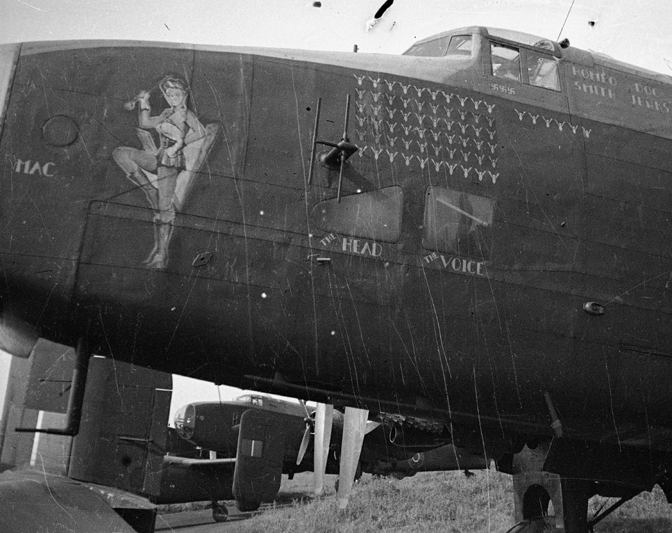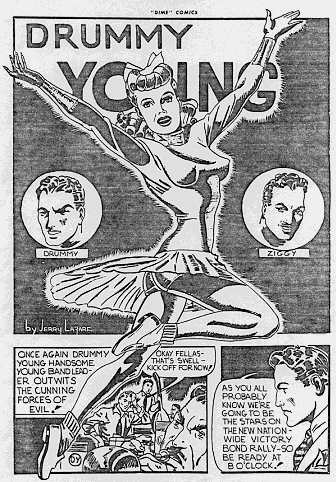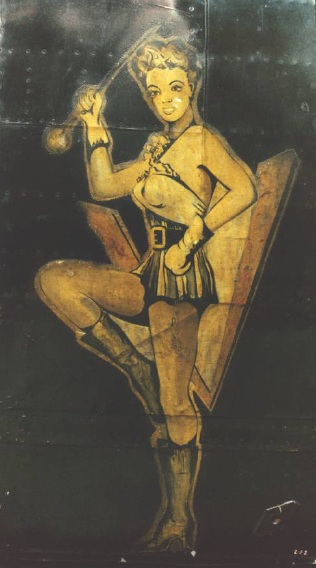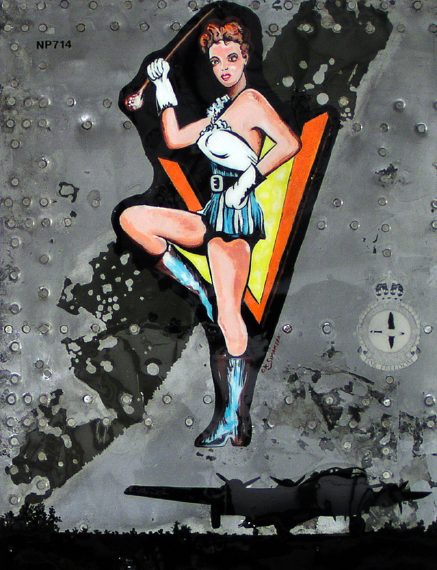 Nose Art
Nose Art  |
BCATP
|
Lancaster
|
Media
|
BCATP
|
Lancaster
|
Media
 Nose Art
Nose Art  |
BCATP
|
Lancaster
|
Media
|
BCATP
|
Lancaster
|
Media
Original Halifax Nose Art Collection
Nose Art
Halifax NP714 was assigned to No. 426 Squadron on 14 July 1944, but flew no sorties. It was then assigned to No. 408 Squadron and flew her first operation to St. Leu D'Esserent on 5 August. The nose art was originally painted on fabric and then applied to the nose of the Halifax.

On 8 August, the bomber was flown on its third operation by F/O R.E. Johnson's crew and it became "their" aircraft. The crew called the aircraft "Veni-Vedi-Vici" (I came, I saw, I conquered). The Johnson crew flew 25 operations in their Halifax and completed a total of 30 operations between 8 August and 28 December 1944. Halifax NP714 went on to complete a total of 66 operations.

|
The art-work was never named. It featured a girl drum major and a "V for Victory" as the aircraft carried the markings "EQ-V." It is thought that the girl was based on a comic character who appeared with the fictitious Canadian band leader, "Drummy Young." Young was always shown as fighting against the forces of evil during World War II and may of the plots involved well-endowed young ladies and a scantly dressed girl drum major. These young female characters were always seen at the mercy of some evil villain until rescued in the nick of time by Drummy Young. The artist was Jerry Lapare. The development of the comic characters derived from the passing of the War Exchange Act on 6 December 1940 under which certain "non-essential" goods were banned from being imported into Canada, including comic books. When Cyril and Gene Bell, two brothers who printed banner advertising for Toronto's fleet of streetcars, heard of the ban, they began printing Canadian comic books featuring Canadian heroes. These comics were known as "whites" because they lacked the colour associated with the American comics. By the end of the war a Canadian comic book industry was flourishing and over twenty million had been printed. All retained a similar theme based on patriotic Canadian attitudes towards the war. |
 |
 |